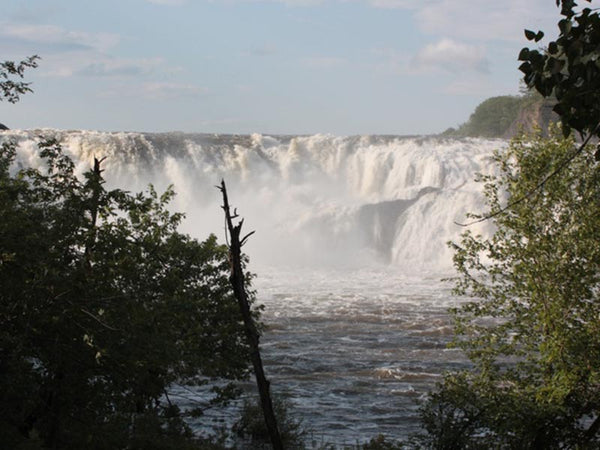
The geographic distribution of the world's hydropower resources is uneven. Generally speaking, in areas with abundant precipitation and rugged terrain, the reserves of hydropower resources are large; while in areas with less precipitation and flat terrain, hydropower resources are relatively poor. According to the amount of precipitation, the regions with abundant hydropower resources in the world are mainly distributed in three regions, one is the equatorial region of Asia, Africa and Latin America; the other is the windward region of the foothills of East Asia and South Asia; the third is the middle latitudes the west coast of the mainland.
The world's hydropower resources are also unbalanced across continents. According to estimates of the resources that may be developed at present, Asia has the most resources, accounting for about 36% of the world's total; followed by Africa, Latin America and North America; Oceania is the least, accounting for only the world's 2%. Oceania has the most hydropower resources and Europe has the least. In terms of countries, China, Russia, the United States, Canada, Brazil and Zaire together account for more than half of the world's hydropower resources.
Brazil is the country with the most abundant water resources in the world, but China ranks first in the world in terms of the abundance of hydropower resources. China has a vast territory, densely covered rivers, large runoff, many mountainous areas, and large terrain height differences.

In the late 1970s, China conducted a census and counted 3,019 rivers with a theoretical reserve of more than 87.6 million kW·h/a, with a total theoretical reserve of 5.7 trillion kW·h/a; After the river, the total is 6.8 trillion kW h/a, ranking first in the world. According to statistics, there are more than 1,100 developable hydropower stations with installed capacity of 500kW and above in a single station. According to a preliminary estimate in 1993, the economically exploitable resources are as follows: the installed capacity is 2.9 million kW, and the average annual power generation for many years is 1.26 trillion kW·h.
China's hydropower resources are mainly distributed in the western region, accounting for more than three-quarters. Geographically, northern China is poor in water resources, while southern China is richer in water resources. The distribution of groundwater resources in China is as follows:
(1) More in the south, less in the north. The average annual groundwater resources in the south account for 69.2% of the national groundwater resources, while the north only accounts for 30.8%.
(2) The modulus of groundwater resources in the plain area is generally larger than that of the surrounding hilly areas.
(3) Groundwater resources in plain areas are mainly distributed in the north, and groundwater resources in mountainous areas are mainly distributed in the south. The groundwater resources in the northern plains account for 78% of the national plains groundwater resources; the southern hilly areas account for 79% of the national groundwater resources in the hilly areas. The average resource modulus of groundwater in the southern hilly area is 4 times that of the northern hilly area; the average annual resource modulus of groundwater in the southern plain area is 2.5 times that of the northern plain area.
The reserves of hydropower resources depend on the drop and runoff of rivers. The terrain of China gradually declines from the Qinghai-Tibet Plateau in the southwest to the east, while the precipitation gradually decreases from the southeast to the northwest. Therefore, the geographical distribution of China's hydropower resources, the most abundant hydropower is in the Southwest, and the least in North China. The three major rivers (Nujiang, Lancang and Jinsha River) in the Hengduan Mountains region in southwest China are extremely rich in water energy due to their large drop. The results of the national census of hydropower resources show that China's hydropower reserves are 680 million kW, and the corresponding annual electricity can reach 6.02 trillion kW, accounting for about 1/6 of the world's total.

Due to various economic and technical constraints, the theoretical reserves of hydropower resources cannot be fully utilized. The hydropower resources that may be developed in modern technology and are more economical are called exploitable hydropower resources. China's exploitable hydropower resources are about 378 million kilowatts, which can generate 1.9 trillion kWh of electricity every year. China's exploitable hydropower resources are mainly distributed in the southwest, south-central and northwest regions, which together account for more than 90% of the country's total. Among them, the southwest region alone accounts for 2/3 of the country. From the analysis of the proportion of water energy in the resource structure of conventional energy, the major regions in southern China and the northwest region occupy an important position. The proportion of water energy in various conventional energy resources in each region is: 72.2% in the southwest region, 51.2% in the central and southern regions, 35% in the northwest region, 24% in the east China region, 14% in the northeast region, and 1% in the north China region.
From the perspective of the water system, more than half of China's exploitable hydropower resources belong to the Yangtze River system, which is mainly distributed in the upper reaches of the Jinsha River and the main stream of the Yangtze River from Yibin to Yichang and the larger tributaries of these river sections. The Tibet water system and the southwest international water system have developed hydropower reserves second only to the Yangtze River system, accounting for about 26.3% of the country's total. The remaining 20.3% of the exploitable water energy in the country is distributed in various water systems, of which the Yellow River water system accounts for 6.1%, the Pearl River water system accounts for 58%, the southeast water system accounts for 2.9%, the northern inland and Xinjiang water systems account for 2.8%, and the Northeast water system accounts for 2.3%. The Hai and Luan River water systems accounted for 0.3%, and the Huai River water system accounted for 0.1%.
According to statistics, the total reserves of hydropower resources on the earth are about 5 billion kilowatts, and the corresponding annual power generation is 44.3 trillion kWh. However, the technically possible hydropower installed capacity is 2.26 billion kW, and the annual power generation capacity is 19.4 trillion kWh. . Therefore, the world's hydropower resources are both abundant and limited.